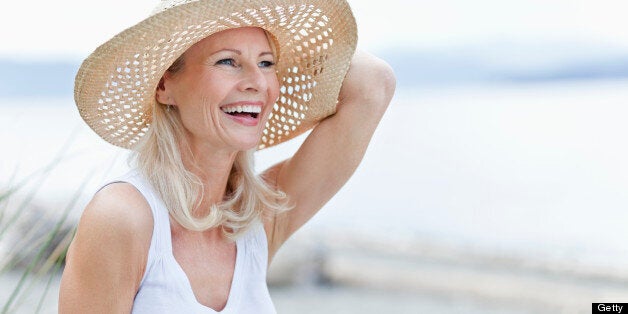
Over the past decade there has been an increase of media attention on women in their forties and fifties and their accomplishments, in recognition of the fact that the 'baby boomers', as they are also known, constitute an important section of consumer society.
We are largely talking about affluent middle class women, yet this has had wider resonance, beyond class demographics. There are now blogs that specifically address concerns of older women and there seems to be a more general acceptance and an attempt to understand their needs. Despite such changes, older women are still, by and large, invisible.
Our society remains youth oriented: celebrities are often praised for their 'successful ageing', understood as a way to keep the signs of age at bay through procedures that may involve cosmetic surgery. Looking young is the imperative.
As a consequence of this emphasis on youth, an area in which older women are still invisible is that of fashion and beauty. But now and again an older model will make an appearance.
There is still a degree of uncertainty as to who is an 'older model' - sometimes referred to as mature model - and what she is supposed to look like. The truth is that older models cannot be pigeon-holed. So in any discussion and advocacy of greater diversity in the fashion industry it is important that this should be stretched to embrace the older model, who too comes in all shapes, races, sizes, and can be able bodied or disabled, just like her younger counterpart.
Having older models in fashion and beauty spreads is important, to show that beauty is not to be found only amongst the very young, to give women the confidence to embrace their age without feeling compelled to set themselves the impossible goal of eternal youth.
This should happen as a matter of course, beyond any tokenistic gesture. We do, from time to time, see fashion spreads with legendary models such as the eighty one year old Carmen dell'Orefice or with celebrities and film stars who have become poster girls for older women or even with very old women celebrated for their vitality and joi de vivre, as the wonderful older ladies photographed by Ari Seth Cohen. All this is fine but definitely not enough. We need to see many more mature models, from forty to seventy and over, to make the point that embracing age does not mean giving up on beauty and style and that being old is not synonymous with being decrepit.
As an aside, I feel compelled to clarify that I do not equate embracing one's age with embracing one's grey. The two are not identical propositions. My hair is grey, very long and thick, and I confess being quite proud of it. I am often asked whether I believe that all women my age or older should stop colouring their hair. Absolutely not. I disagree with colouring to look younger, because that is not what colouring achieves, but colouring to be stylish is a choice, just like NOT colouring - I would like to think that grey is also a colour and a choice.
We need more older models on the catwalk, in fashion, editorial spreads, and in ads: to celebrate and appreciate mature beauty and to empower women, of all ages.